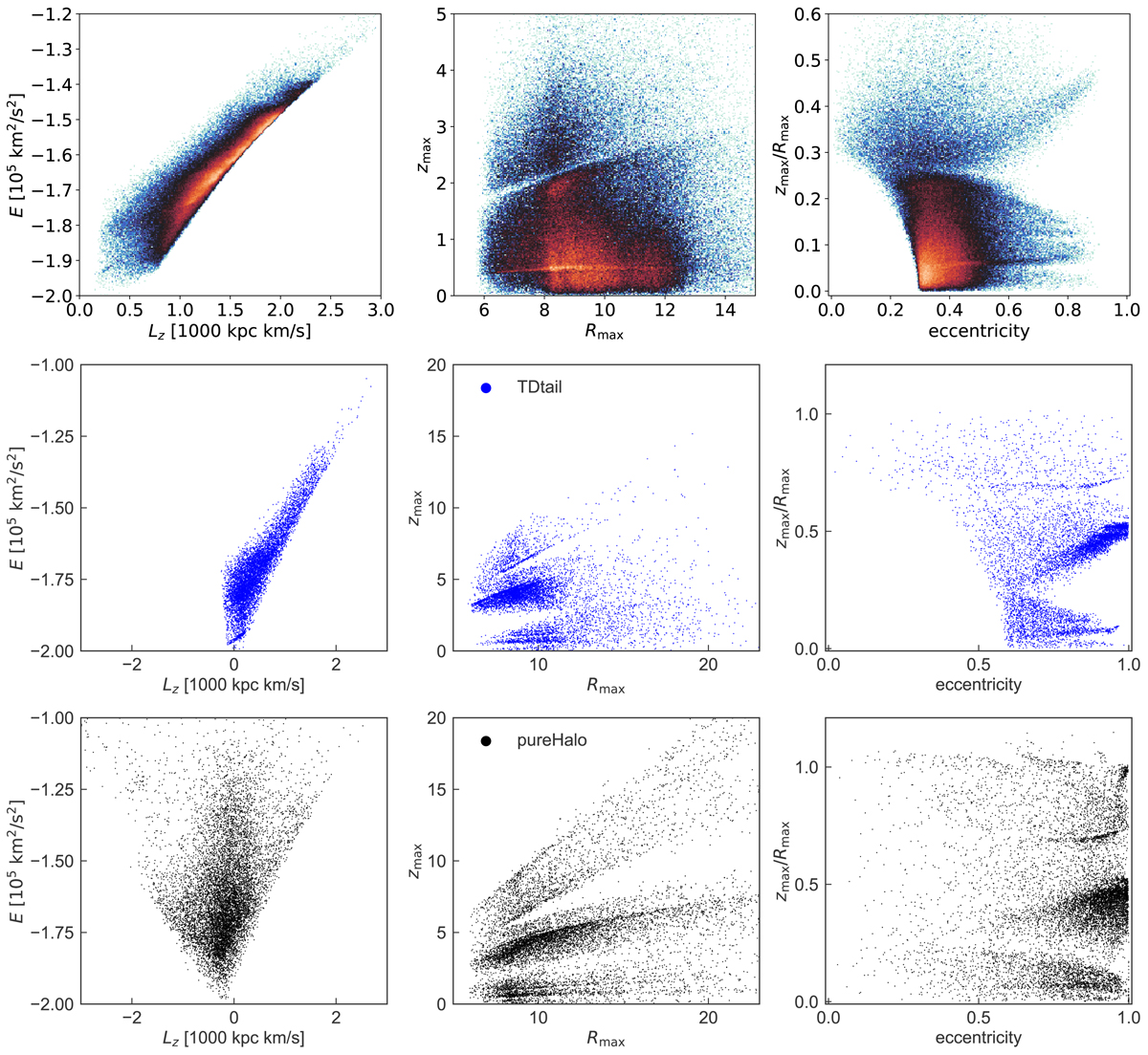Fig. 3.

Orbital parameters spaces for the different subsets defined in Sect. 2. From top to bottom: thick-disc, TDtail, and pureHalo. The left panels correspond to the most often used space to identify merger debris (i.e. Lz, E). The substructure seen near Lz = 250 kpc km s−1 for highly bound energies in the middle-left panel is the globular cluster M4 (also known as NGC 6221), whose extent is largely the result of limitations in the Gaia DR2 astrometry for very dense stellar fields. The subspaces shown in the middle and right panels depict a large amount of structure, which appears to be independent of the subset or population considered. We note that the top row shows a smaller dynamical range than the other two rows.
Current usage metrics show cumulative count of Article Views (full-text article views including HTML views, PDF and ePub downloads, according to the available data) and Abstracts Views on Vision4Press platform.
Data correspond to usage on the plateform after 2015. The current usage metrics is available 48-96 hours after online publication and is updated daily on week days.
Initial download of the metrics may take a while.


